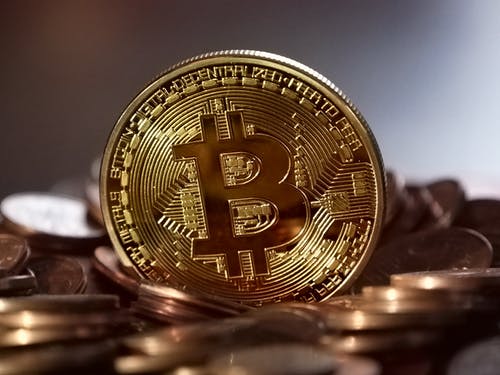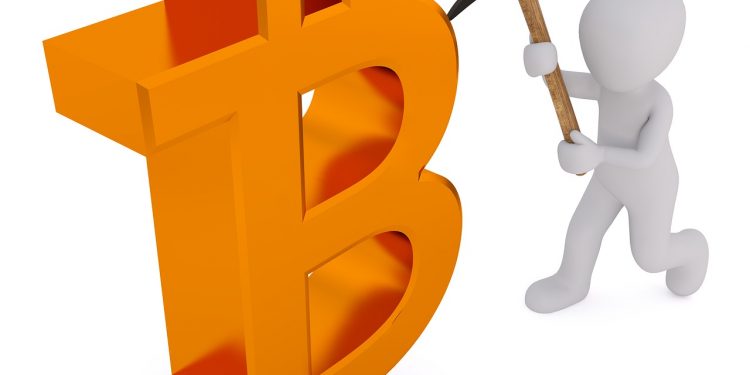Key Takeaways
- Bitcoin mining is essential for Bitcoin’s security and decentralization. Miners do not only work to verify transactions, but also add them to the blockchain, and maintain the network’s integrity.
- Bitcoin mining requires significant investment and technical knowledge. Electricity costs, specialized hardware, as well as an understanding of mining pools are all important factors for anyone considering becoming a miner.
- The decision to mine Bitcoin depends on your individual circumstances. Carefully consider the cost of electricity in your location and calculate the potential profitability before deciding if mining is right for you.
Quick Bitcoin Mining Facts:
- There are only 21 million Bitcoins available for mining in total
- When Bitcoin miners have unlocked all of the Bitcoins, the world’s supply will be essentially depleted
- As of March 6, 2024, 19.646 million Bitcoins had been mined, leaving 1.353 million to enter circulation
- Even after all of Bitcoin has been mined, miners will be incentivized to process transactions with fees
What exactly is Bitcoin mining?
The Direct Answer: Bitcoin mining is the process of verifying Bitcoin transactions with the use of computers and securing the blockchain network, while earning new Bitcoins as a reward.
Users of traditional government currencies, such as the US dollar or euro, must rely on a central authority to manage and regulate the circulation of money, as well as to prosecute those who violate the system’s rules. Bitcoin, on the other hand, manages its money through software and a network of users.
On the other hand, Bitcoin manages itself through software and a network of users.
Information that, with government funds, would be housed in a centralized server or system of databases (such as in central bank transaction records) is instead maintained by users, making the system decentralized, or free from the control of any one party.
How does Bitcoin mining work?
Bitcoin uses a process known as “mining” to keep its distributed network secure and to control the supply of new money released into its economy.
Satoshi Nakamoto, the creator of Bitcoin, mined the first Bitcoins in 2009 using dedicated machines to convert electricity into Bitcoins.
There are now many more miners all over the world who operate and maintain large data centers solely for the purpose of powering the network.
Find out more about how to mine Bitcoin in our article: 6 Best Bitcoin Mining Software To Try Out In 2024
How is Bitcoin mined?
Mining is one of the key components that enables Bitcoin to regulate the distributed network of computers that enables its software.
Miners propose the blocks that make up the Bitcoin blockchain and store the history of network transactions by racing to solve cryptographic puzzles.
When a miner discovers a block, they broadcast it to the network, where it is verified and approved by other nodes.
New Bitcoins are sent to the winning miners in exchange for this service.

Proof of Work (PoW)
Proof of Work (PoW) is the mechanism that keeps this process in sync by requiring miners to expend computational energy to add blocks to the blockchain.
While many will point to energy consumption as a criticism of Bitcoin, it is important to note that many financial-related activities, such as gold mining and fiat currency production, consume significantly more energy than Bitcoin mining.
In order to crack these crypto puzzles and find valid blocks, miners must discover the correct string of pseudorandom numbers, known as a hash, which must match the protocol’s conditions. It is essentially a lottery system in which miners’ chances of discovering new blocks increase in proportion to the amount of energy they expend.
Hashing is a mathematical operation that accepts any arbitrary amount of data and returns a fixed size output. In the Bitcoin protocol, computers race to generate hashes until one of the hashes has a small enough value to propose a block.
The winning hash is then broadcast to other computers, who can then verify whether or not the solution is correct. If the block is valid, the user who broadcasted it receives new Bitcoin.
Mining is hard
However, with each new miner that joins the network, the competition for finding blocks becomes more difficult. The price of production rises as the difficulty rises, followed by the price of the underlying commodity, in this case, Bitcoin.
To put it another way, the probability of finding a hash is approximately equal to a miner’s total mining power on the network. This means that the more computing power a miner can provide, the more likely he or she is to find the hash and thus receive the block reward.
There is strength in numbers as many miners pool their efforts because those with a small percentage of the mining power are unlikely to discover the next block and thus rarely get compensated.
Today, the majority of mining is done by “mining pools,” which are groups of cryptocurrency miners who share their processing power across a network and split the block reward amongst themselves.
Find out how long it takes to mine 1 Bitcoin in our article: How Long Does it Take to Mine One Bitcoin?
Bitcoin Law
Of course, while this process benefits Bitcoin miners, it also serves a far more important purpose by enforcing Bitcoin’s monetary policy.
Miners control the rate at which new Bitcoins are made available to users, as well as helping to trigger and enforce Bitcoin money supply rules set by the software.
To keep the total supply finite, the number of Bitcoin (BTC) released in each block is cut in half after 210,000 blocks are produced. This event, known as the “halving,” ensures that Bitcoins become increasingly scarce over time.
In fact, according to the software rules, only 21 million BTC will ever be introduced into the network’s economy. Satoshi placed a high value on Bitcoin having a fixed supply in order for it to gain value over time in order to hedge against fiat currencies.
As of March 6, 2024, 19.646 million Bitcoins have been mined, which leaves 1.353 million still to be introduced into circulation. The final block is expected to be mined sometime in 2140.
Because of the built-in rate of inflation, and thus Bitcoin’s emphasis on long-term stability and transparency, developer confidence in the protocol has remained high. Furthermore, the fixed monetary policy is the reason for the steady increase in the number of investors.
Find out more about Bitcoin mining in our article: The Future of Bitcoin Mining
Final Thoughts
We hope you enjoyed our simple guide on Bitcoin mining. Bitcoin mining is hard, but if you have not yet been deterred from starting your own mining operation, we have some additional resources for you. For example you will need to know what Mining Hardware you should use. This you can find out in our guide on the Top Mining Rigs in 2024.
If you think that mining Bitcoin is not for you, but you are still interested in having some skin in the game, there is always the possibility to invest in Bitcoin Mining companies through stocks. You can find out more about this in our guide on Top Bitcoin Mining Stocks on Nasdaq.
Frequently Asked Questions (FAQ)
Bitcoin mining profitability depends on electricity costs, efficiency of mining equipment, and current Bitcoin price. High electricity costs and low Bitcoin prices can make it unprofitable.
Mining pools are groups of Bitcoin miners who combine their computing power to increase their chances of solving blocks and earning rewards, which they share based on their contributed processing power.
As of early 2024, the reward for mining a Bitcoin block is 6.25 Bitcoins. This reward halves approximately every four years in an event known as “Bitcoin halving.” The next Bitcoin halving is expected to be in April 2024.
Bitcoin mining difficulty is a measure of how hard it is to find a new block. It adjusts approximately every two weeks to maintain a constant block time, considering the total computational power in the network.
Bitcoin mining legality depends on your country. It’s legal in many countries but banned or restricted in others due to concerns like energy consumption, financial regulation, or economic stability. Bitcoin mining for example is legal in the US, but banned in China.
To create a Bitcoin wallet, choose a wallet type (hardware, software, or paper), download a reputable wallet app (such as Metamask) or buy a hardware wallet, follow its setup instructions, and securely store your private keys.
To sell Bitcoin, sign up on a cryptocurrency exchange or use a Bitcoin ATM. On exchanges, transfer your Bitcoin, place a sell order, and withdraw the fiat currency to your bank account. With ATMs, follow on-screen instructions.










